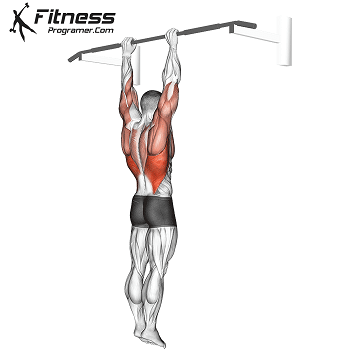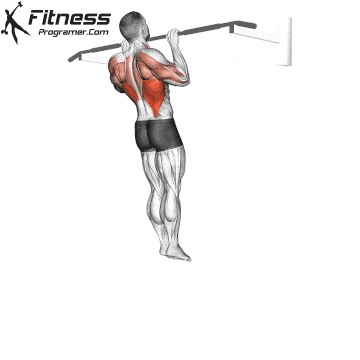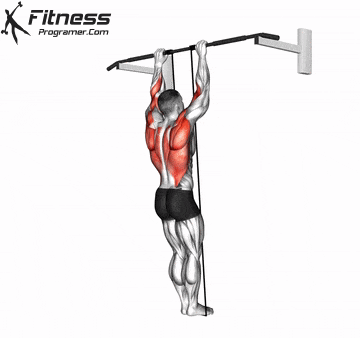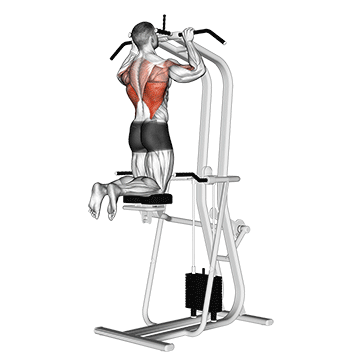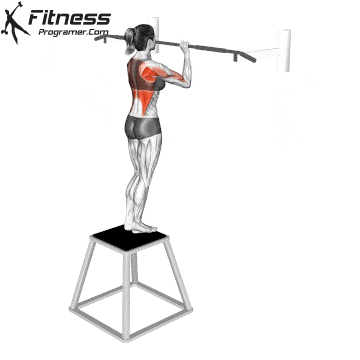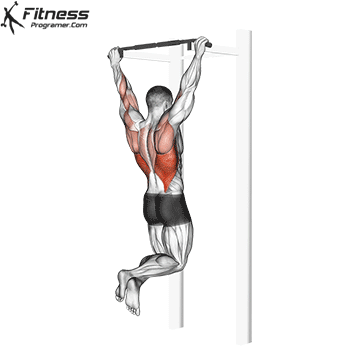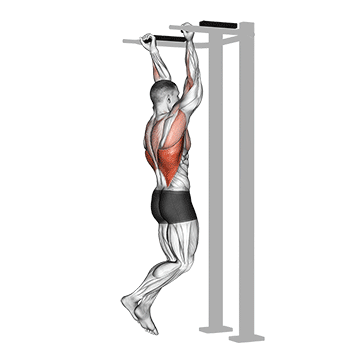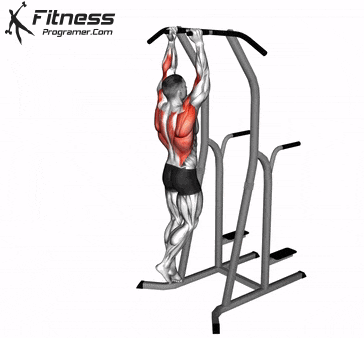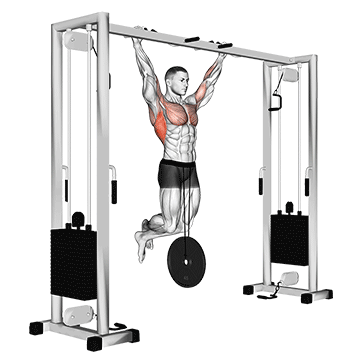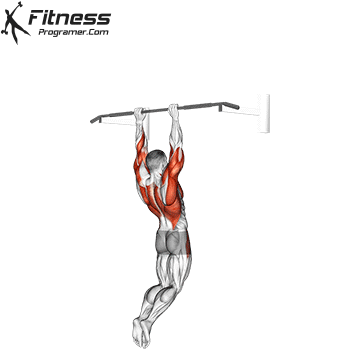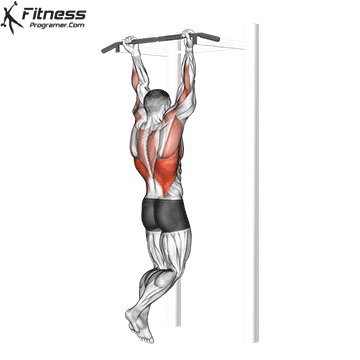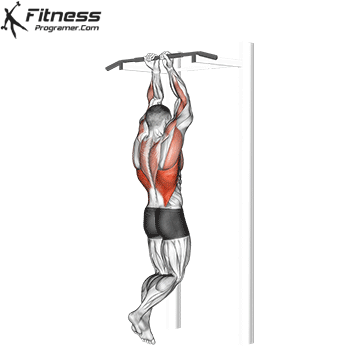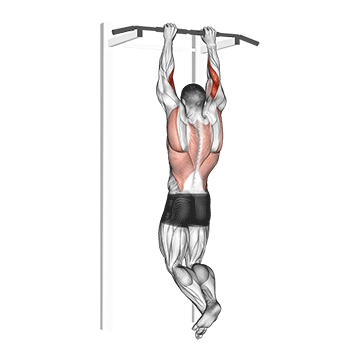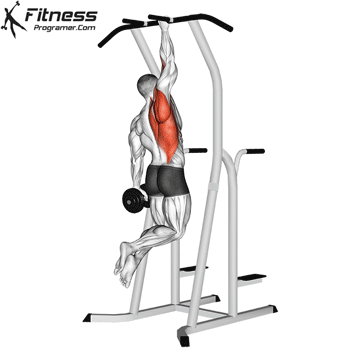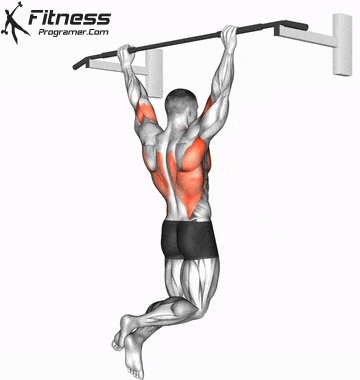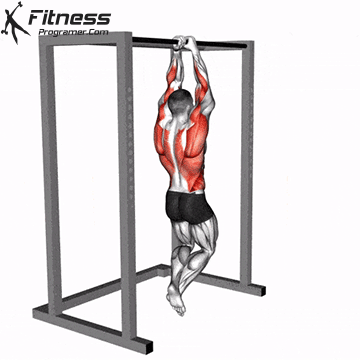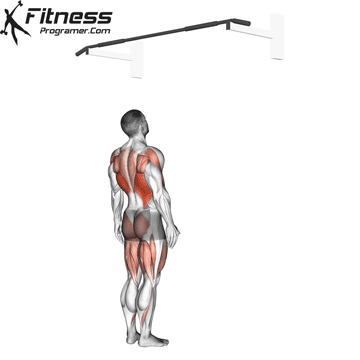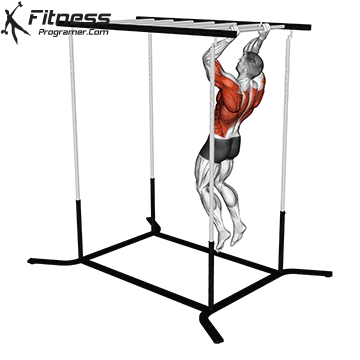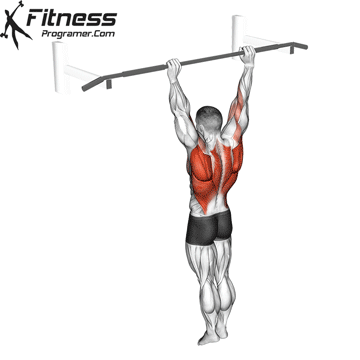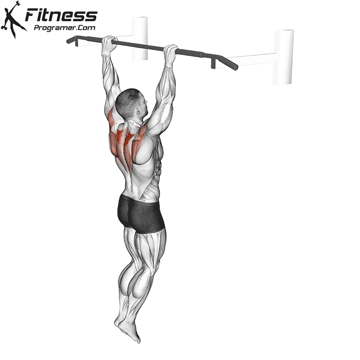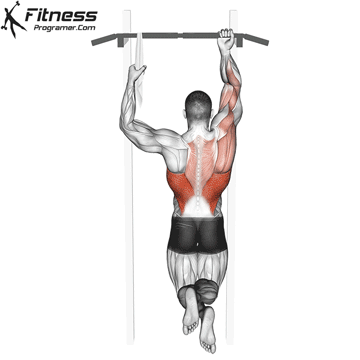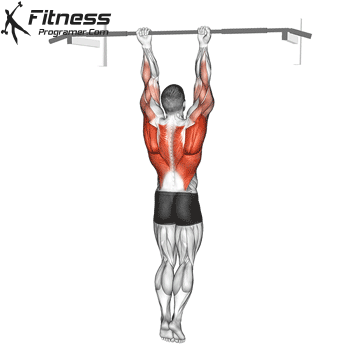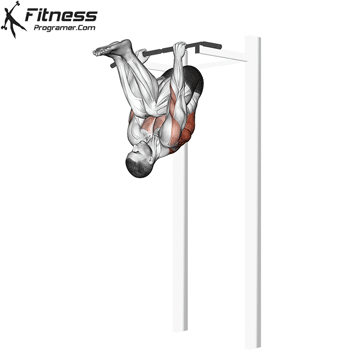Overview
The top half pull-up is a partial repetition exercise that focuses on the upper range of the pull-up. Instead of starting from a dead hang, you begin with your chin over the bar and perform only the top half of the movement. This variation enhances lockout strength, improves scapular stability, and reinforces the most difficult part of the pull-up, where many lifters tend to fail. It is commonly used to break plateaus, build isometric strength, and reinforce controlled technique in advanced pulling exercises.
How to Perform Top Half Pull-Up
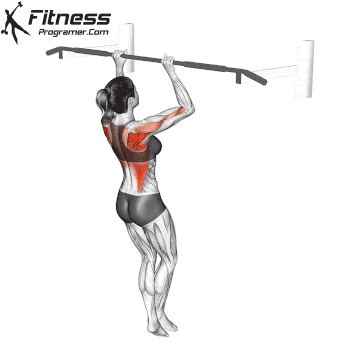
Stand on a box or jump up so your chin starts above the bar.
Lower yourself halfway down (elbows reach roughly a 90-degree bend).
Pause briefly, then pull back up until your chin clears the bar again.
Repeat for 3–8 reps, maintaining tension and control throughout.
Avoid full extension at the bottom; stay in the upper half of the range.
Tips for Proper Form
Engage your scapula and lats throughout the movement.
Keep your elbows tucked slightly toward your sides.
Avoid full relaxation at the bottom of the half range.
Breathe steadily to maintain core stability and rhythm.
Use a controlled tempo to prevent using momentum.
Common Mistakes
Dropping too far into a full rep, defeating the purpose of the partial.
Shrugging the shoulders, which limits lat and rhomboid engagement.
Swinging or kipping, reducing time under tension.
Letting the core disengage, leading to poor alignment.
Neglecting the pause at the bottom of the top range.
Benefits of the Top Half Pull-Up
Improves Lockout Strength: Reinforces the hardest part of the pull-up—clearing the bar with control.
Builds Scapular Stability: Strengthens the upper back and scapular retractors for better posture and pull-up mechanics.
Enhances Pull-Up Endurance: Develops the muscles needed for multiple clean reps without fatigue.
Targets Weak Points in the Range of Motion: Focuses training on the portion where most fail or lose form.
Prepares for Muscle-Up and Advanced Skills: Builds transition strength from the top of the pull-up to higher-level movements.
Increases Isometric Control: Trains the ability to hold and control the top position without collapsing.
Strengthens Biceps and Upper Lats: Greater time under tension in a shortened position promotes hypertrophy and endurance.
How to Incorporate Into Your Routine
- For Beginners: Use a band or box to assist into the top position and hold partial reps for 2–3 sets of 3–5 reps.
- For Hypertrophy: Perform 3–4 sets of 5–8 reps, pausing briefly in the bottom of the top range.
- For Strength: Add weight or slow the tempo, using 3–5 reps for 3–4 sets with full control.
- For Functional Training: Combine with isometric holds or scapular pull-ups to reinforce upper body mechanics.
- For Circuit Training: Add to upper body stations as a finisher or superset with pushing movements.
- For General Fitness: Use to reinforce good posture and pull-up technique in back workouts.
- For Calisthenics or Skill Training: Include with muscle-up drills or front lever holds to support transitions and grip strength.
Top Pull-up Muscles Worked
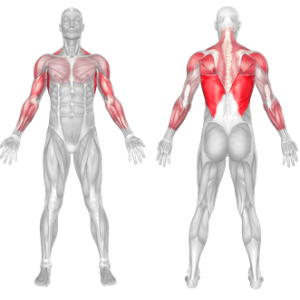
Top Pull-up Variations
Frequently Asked Questions
Why is the top half of a pull-up so hard?
It requires scapular retraction and arm flexion at a mechanical disadvantage, making it a common weak point.
Can this help with muscle-ups?
Yes. It improves strength at the top of the pull, crucial for transitioning into the dip phase.
Should I hold the top position during reps?
Yes. Pausing builds isometric strength and improves lockout control.
Can I do these with bands?
Yes. Bands or partner assistance can help get into and maintain the correct range.
How often should I train top half pull-ups?
2–3 times per week is effective, especially when combined with full-range or eccentric reps.

